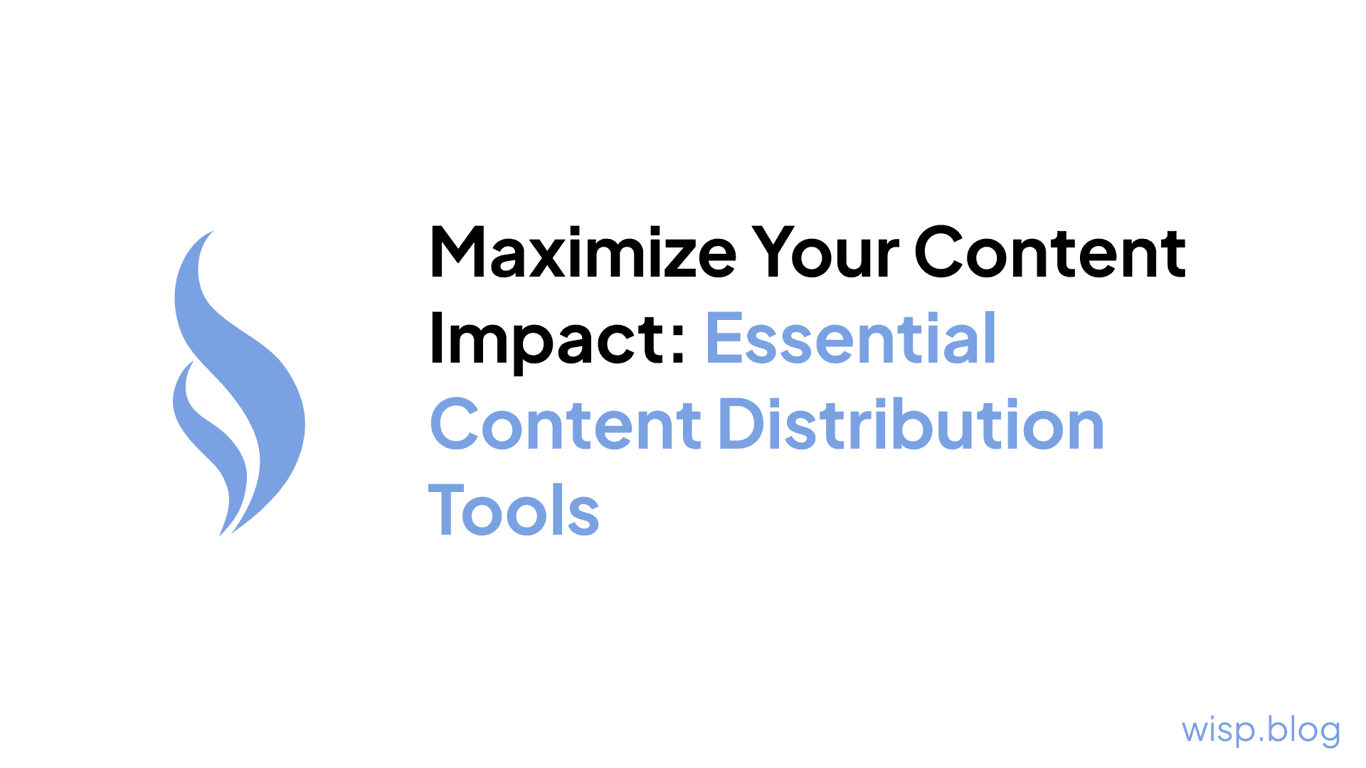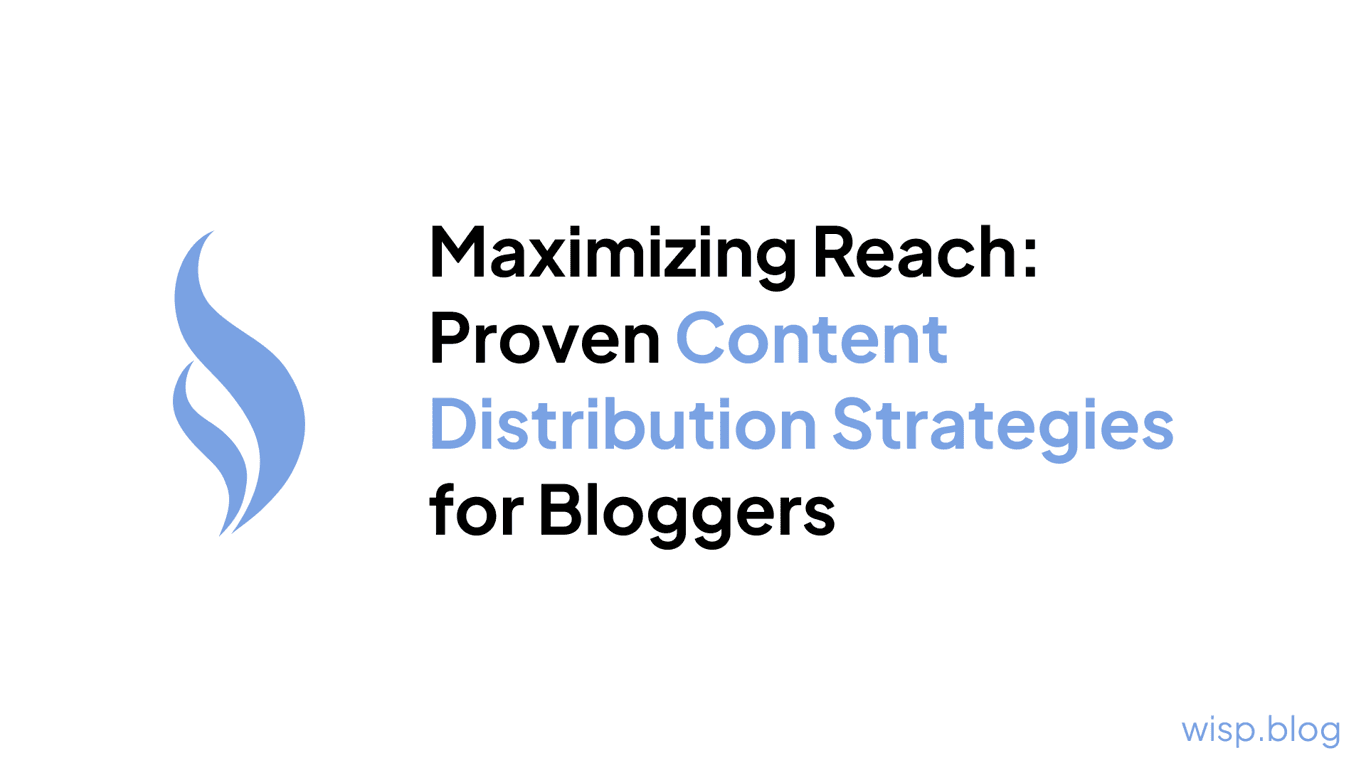
Understanding Content Syndication
To level up your content strategy, it's important to understand the concept of content syndication and how it can benefit your brand. In this section, we will explore what content syndication is and how it works.
What is Content Syndication?
Content syndication refers to the process of distributing and republishing your content on third-party websites or platforms. It allows you to reach a wider audience by leveraging the existing audience and reach of these external platforms. Essentially, it's a way to extend the visibility and reach of your content beyond your own website or blog.
By partnering with content syndication services or platforms, you can share your content with a larger network of readers who may not have discovered your brand otherwise. This can help you attract new readers, increase brand exposure, and drive traffic back to your own website.
How Does Content Syndication Work?
Content syndication works by republishing your content on other websites or platforms through a syndication network. When you syndicate your content, it is typically displayed in a format that includes a snippet or excerpt of the original article, along with a link back to the full article on your website. This allows readers who come across your content on third-party sites to easily navigate to your website for more information.
Content syndication can take various forms, such as full-text syndication, where the entire article is republished, or partial syndication, where only a portion of the article is displayed. The specific terms and conditions of content syndication, including the length of the excerpt and the placement of links, may vary depending on the syndication service or platform.
One of the key benefits of content syndication is that it allows you to tap into the existing audience and reach of the syndication network. This can help you increase your content's exposure, attract new readers, and potentially drive more traffic to your own website.
It's important to note that while content syndication can offer various benefits, it's essential to choose the right syndication service or platform, and consider factors such as the quality and relevancy of the syndication network. For more information on content distribution strategies, including content distribution networks and channels, check out our articles on content distribution networks and content distribution channels.
Understanding the fundamentals of content syndication sets the stage for exploring the benefits of leveraging these services in your content marketing strategy. In the following sections, we will delve deeper into the advantages of content syndication, factors to consider when choosing a syndication service, and best practices for optimizing your content for syndication.
Benefits of Content Syndication Services
Content syndication services play a significant role in amplifying the reach and impact of your content. By leveraging these services, you can reap several benefits for your content marketing efforts.
Increased Reach and Visibility
One of the primary advantages of utilizing content syndication services is the opportunity to expand the reach and visibility of your content. When you syndicate your content, it is distributed and published on various platforms, reaching a wider audience beyond your own website or blog.
Through content syndication, your articles, blog posts, or videos can be showcased on high-traffic websites, industry-specific platforms, and popular social media channels. This exposure allows you to tap into new audiences who may not have discovered your content otherwise. As a result, you can attract more visitors, generate increased traffic to your website, and expand your overall online presence.
Improved SEO Performance
Content syndication can have a positive impact on your search engine optimization (SEO) efforts. When your content is published on authoritative websites and platforms, it can generate valuable backlinks to your own website. These backlinks signal to search engines that your content is trustworthy and relevant, which can improve your website's search engine rankings.
Additionally, content syndication can help you target specific keywords and topics, increasing your chances of ranking higher in search engine results pages. By strategically syndicating your content on platforms that align with your target audience and industry, you can strengthen your online visibility and attract more organic traffic.
Enhanced Brand Awareness
Content syndication also plays a crucial role in building and enhancing brand awareness. When your content is syndicated across various platforms, it exposes your brand to a wider audience, increasing the chances of brand recognition and recall.
By consistently delivering valuable and engaging content through syndication, you can establish yourself as a thought leader in your industry. This can lead to increased trust and credibility among your target audience, ultimately driving more conversions and brand loyalty.
To maximize the benefits of content syndication, it's important to choose the right platforms and content distribution channels that align with your target audience and goals. Additionally, regularly monitoring and analyzing performance metrics can help you refine your syndication strategy and ensure that you're getting the most out of your syndicated content. For more insights, check out our article on content distribution strategies.
In summary, content syndication services offer significant benefits, including increased reach and visibility, improved SEO performance, and enhanced brand awareness. By incorporating content syndication into your content marketing strategy, you can effectively amplify the impact of your content and reach a broader audience.
Choosing the Right Content Syndication Service
When it comes to content syndication, selecting the right content syndication service is crucial for the success of your content distribution strategy. There are several factors to consider and various types of content syndication services available. Let's explore these in more detail.
Factors to Consider
Before choosing a content syndication service, it's important to evaluate several key factors to ensure it aligns with your goals and requirements. Consider the following:
Target Audience: Determine if the content syndication service reaches your desired target audience. Look for platforms that cater to the specific industry or niche you are targeting.
Relevance: Assess the relevance of the syndication service to your content. Ensure that the platform caters to the type of content you create, whether it's articles, blog posts, videos, or infographics.
Reach and Distribution: Evaluate the reach and distribution capabilities of the syndication service. Look for services that have a wide network of distribution partners, allowing your content to be exposed to a larger audience.
Quality Control: Consider the level of quality control exercised by the syndication service. Ensure that the platform has mechanisms in place to maintain the integrity of your content and prevent it from being displayed alongside low-quality or irrelevant content.
Cost: Assess the cost implications of the content syndication service. Determine if the pricing structure aligns with your budget and the value you expect to receive from the service.
Analytics and Reporting: Look for syndication services that provide detailed analytics and reporting features. This will allow you to track the performance of your syndicated content and make data-driven decisions to optimize your strategy.
Types of Content Syndication Services
There are various types of content syndication services available, each offering unique features and benefits. Here are some common types:
Type of Content Syndication Service | Description |
|---|---|
Content Distribution Networks | These networks distribute your content across a wide range of websites, reaching a large audience. They often offer targeting options to reach specific demographics or industries. Learn more about content distribution networks. |
Social Media Syndication | Platforms like Facebook, Twitter, and LinkedIn allow you to syndicate your content to their user base. Leveraging social media can help increase the visibility and engagement of your content. |
Industry-Specific Platforms | These platforms are focused on specific industries or niches. They connect content creators with relevant audiences within those industries. |
Marketplaces and Aggregators | Marketplaces and aggregators collect and organize content from various sources, making it easily accessible to their users. These platforms often have a wide reach, exposing your content to a broader audience. |
Native Advertising Platforms | Native advertising platforms allow you to promote your content in a non-disruptive manner within relevant publishers' websites. This form of syndication seamlessly integrates your content with the publisher's content. |
RSS Feeds | RSS feeds allow users to subscribe to your content and receive updates automatically. This type of syndication is particularly useful for blogs and news websites. |
By considering these factors and exploring the different types of content syndication services available, you can choose the one that best suits your content distribution needs. Remember to regularly monitor and analyze the performance of your syndicated content to ensure it aligns with your goals and helps you achieve the desired results. For more information on content distribution strategies, channels, and tools, check out our blog.
Best Practices for Content Syndication
To make the most out of your content syndication efforts, it's important to follow some best practices. By optimizing your content for syndication and monitoring its performance metrics, you can maximize the effectiveness of your syndicated content.
Optimizing Your Content for Syndication
When preparing your content for syndication, there are a few key factors to consider:
Quality Content: Ensure that your content is well-written, engaging, and provides value to your target audience. High-quality content is more likely to be accepted and shared by syndication partners.
Clear and Concise Headlines: Craft attention-grabbing headlines that accurately summarize the content and entice readers to click through. A compelling headline can significantly impact the performance of your syndicated content.
Readability and Formatting: Format your content in a way that is visually appealing and easy to read. Use subheadings, bullet points, and short paragraphs to improve readability. Remember to include relevant images or visuals to enhance the overall appeal of your content.
Avoid Duplicate Content: Syndication does not mean duplicating your content across multiple platforms. Search engines penalize duplicate content, which can harm your SEO efforts. Instead, create unique variations of your content for each syndication partner.
Internal and External Links: Incorporate relevant internal links to other articles on your website to drive traffic and improve SEO. Additionally, include external links to reputable sources that support the information in your content.
By optimizing your content for syndication, you increase its chances of being accepted by syndication partners and capturing the interest of a wider audience.
Monitoring and Analyzing Performance Metrics
Once your content is syndicated, it's crucial to monitor and analyze its performance metrics. This data provides valuable insights into the success of your syndication efforts and helps you make data-driven decisions for future content strategies. Key performance metrics to focus on include:
Page Views: Track the number of views your syndicated content receives on different platforms. This metric indicates the reach and visibility of your content.
Click-through Rate (CTR): Measure the percentage of viewers who click on your content to visit your website. A higher CTR suggests that your headline and content are engaging and compelling.
Time on Page: Analyze the average time viewers spend on your content. This metric indicates the level of engagement and interest generated by your syndicated content.
Conversion Rate: Track the number of viewers who take a desired action, such as signing up for a newsletter or making a purchase. This metric helps measure the effectiveness of your syndicated content in driving conversions.
Referral Traffic: Monitor the amount of traffic generated from syndicated content to your website. This metric provides insights into which syndication partners are delivering the most value.
By regularly monitoring these performance metrics, you can identify trends, evaluate the success of your content syndication efforts, and make informed decisions to improve your strategy moving forward.
Common Misconceptions about Content Syndication
Content syndication is a powerful strategy for expanding the reach of your content and increasing its visibility. However, there are some common misconceptions and misunderstandings surrounding content syndication that need to be addressed in order to fully leverage its benefits.
Addressing Myths and Misunderstandings
Myth: Content syndication leads to duplicate content penalties.One of the most prevalent myths about content syndication is that it can result in duplicate content penalties from search engines. However, this is not necessarily true. When done correctly, content syndication can actually enhance your SEO performance.
Search engines like Google are aware of content syndication practices and can differentiate between original and syndicated content. To avoid any potential negative impacts, it's important to follow best practices such as using canonical tags, ensuring proper attribution, and syndicating your content on reputable platforms.
Myth: Content syndication cannibalizes website traffic.Another misconception is that syndicating your content on external platforms will divert traffic away from your website. While it's true that syndicated content may drive traffic to the platform hosting your content, it can also generate significant referral traffic back to your website.
Syndication allows you to tap into new audiences and expand your reach beyond your existing website visitors. By including links to relevant pages on your website within the syndicated content, you can drive traffic back to your site and potentially convert those visitors into leads or customers.
Clearing Up Confusion
Confusion: Content syndication is a one-size-fits-all approach.Content syndication is not a one-size-fits-all approach. It requires careful consideration and customization to align with your specific goals and target audience. Different platforms and syndication services offer varying benefits and reach. It's important to do your research and choose the right content syndication service that aligns with your content strategy.
Consider factors such as the platform's audience demographics, content relevancy, and distribution channels. This will help ensure that your content reaches the right audience and achieves your desired outcomes.
Clearing up these misconceptions and addressing any confusion around content syndication is crucial to fully leverage its benefits. By understanding how content syndication works and dispelling myths, you can confidently incorporate it into your content distribution strategy. Remember to optimize your content for syndication, monitor performance metrics, and integrate it seamlessly with your overall content strategy for maximum impact.
Leveraging Content Syndication for Success
To truly harness the power of content syndication, it's important to integrate it effectively into your overall content strategy. By doing so, you can maximize the impact of syndicated content and achieve your marketing goals.
Integration with Your Content Strategy
Integrating content syndication into your content strategy involves careful planning and coordination. Here are some key considerations to ensure seamless integration:
Define your goals: Clearly outline your objectives for content syndication. Are you aiming to increase brand awareness, drive traffic to your website, generate leads, or all of the above? Having well-defined goals will guide your syndication efforts.
Identify target platforms: Research and identify the content syndication platforms that align with your target audience and industry. Look for platforms that have a strong reach and are relevant to your content niche. Consider exploring different content distribution networks and content distribution strategies to find the right fit.
Tailor your content: Adapt your content to suit the platform and audience you're targeting. While syndicating, make sure to follow the guidelines and formatting requirements of each platform. Customize headlines, introductions, and calls-to-action to optimize engagement and encourage readers to visit your website.
Maintain consistency: Ensure that your syndicated content aligns with your brand's tone, style, and messaging. Consistency across platforms helps build trust and familiarity among your audience. Use your syndicated content to reinforce your brand's value proposition and unique selling points.
Leverage internal links: When syndicating content, include relevant internal links to direct readers back to your website. These links can lead to related articles, product pages, or landing pages that further engage your audience and drive conversions. Internal linking also helps improve your website's SEO performance.
Maximizing the Impact of Syndicated Content
To get the most out of your syndicated content, consider the following strategies:
Optimize for SEO: Optimize your syndicated content for search engines by incorporating relevant keywords, meta tags, and descriptions. This can help improve your search engine rankings and increase organic visibility.
Monitor performance metrics: Regularly monitor and analyze performance metrics to evaluate the effectiveness of your syndicated content. Track metrics such as click-through rates, engagement, and conversions. Identify patterns and trends to refine your syndication strategy over time.
Engage with your audience: Actively engage with readers who interact with your syndicated content. Respond to comments, answer questions, and encourage discussions. This helps build a loyal community and establishes your brand as an authority in your industry.
Repurpose and recycle content: Repurpose your high-performing syndicated content for other distribution channels, such as social media or email newsletters. This allows you to reach a wider audience and extend the lifespan of your content.
By integrating content syndication into your content strategy and maximizing its impact, you can effectively expand your reach, increase brand awareness, and drive valuable traffic to your website. Remember to adapt your approach based on the performance data and feedback you receive, continuously refining and optimizing your content syndication efforts.



